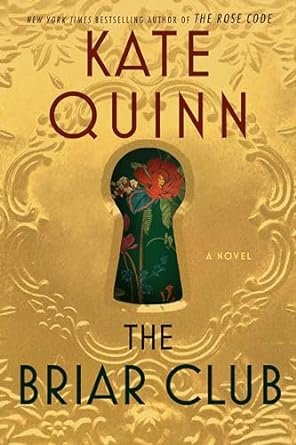A Journey Through the 1950s: My Thoughts on The Briar Club
When the opportunity arose to dive into Kate Quinn’s The Briar Club, I felt an irresistible pull. Having enjoyed her short story “Signal Moon,” I was eager to explore her talent in a full-length novel. The premise—a character-driven historical fiction set in the little-examined 1950s—promised both depth and intrigue, and I wasn’t disappointed.
Set against the backdrop of post-war Washington D.C., The Briar Club introduces us to Briar House, an all-female boarding house run by the cantankerous Mrs. Nelson. The intimate dynamics among the boarders shift dramatically with the arrival of the widowed Grace March, whose warmth transforms the solitary atmosphere into a tightly-knit community. What starts as a cozy tale soon spirals into suspense after a shocking incident during one of their weekly dinner parties—an event that raises questions not just about friendship but survival itself.
Quinn crafts her characters with remarkable nuance. Each one is distinct, layered, and memorable—so much so that even the supporting male figures come across as authentic rather than mere background noise. I relished the complexity of their backstories, and it was refreshing to see how they defy the usual tropes associated with female-centric narratives. The novel beautifully illustrates how friendships can bloom in the unlikeliest places, with the titular “briar club” serving as an emblem of this found family.
A standout feature of Quinn’s writing is her masterful integration of historical context, particularly touching upon themes like McCarthyism and the Korean War. I appreciated how she didn’t just paint communism as an evil entity but shed light on the varied beliefs surrounding it, adding layers to her story. This thoughtful approach allows readers from different perspectives to find common ground in a sometimes divisive narrative.
The narrative technique—shifting through multiple characters’ perspectives over four years—might be polarizing for some, but I found it a deliciously immersive experience. Each chapter, woven with history and personal growth, kept me intrigued. Indeed, Quinn’s decision to start with the perspective of thirteen-year-old Pete caught me off guard in the best way, enriching the aura of mystery surrounding Grace’s presence in their lives. While the pacing felt deliberate, it allowed me to savor the intricacies of each vignette, reflecting on the impact of the characters’ choices.
If there’s a tiny critique, it might be the moments of jingoism woven through the narrative. While I can see how it resonates deeply with some readers, I found it a bit heavy-handed in parts, especially in the current climate. However, it did not overshadow the rich tapestry of story and character that Quinn so skillfully weaves.
In conclusion, The Briar Club is a treasure for those who cherish character-driven historical fiction. It melds complex personalities with significant historical themes, creating a reading experience that is both captivating and thought-provoking. I wholeheartedly recommend this novel to anyone who enjoys not just a story, but a journey through the very fabric of human relationships against a vibrant historical backdrop.
With my newfound admiration for Kate Quinn, I am already eager to dive into more of her works. For fans of strong, flawed characters and intricate narratives, this book is a must-read. Overall, I’m giving it 4.5 stars, rounding up because, despite its few shortcomings, I found so much to love.
Connect with me for more bookish adventures: [My Blog] | [Instagram] | [Twitter]







